Igreja de Santa Cruz
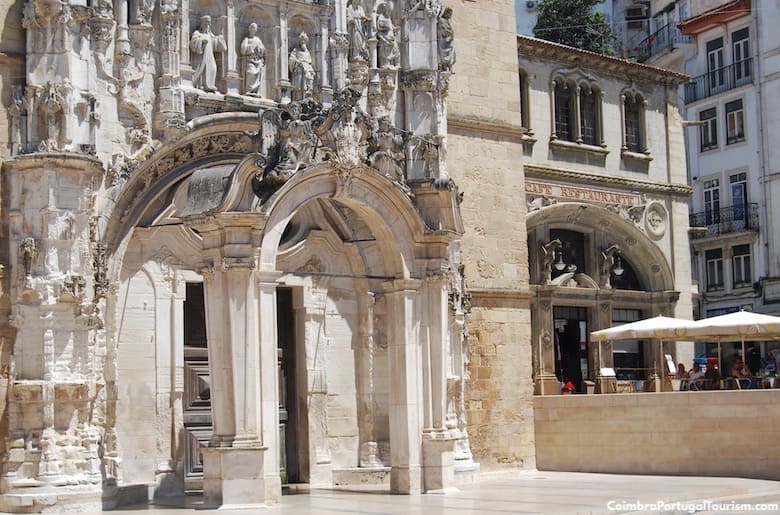
The church of the 12th-century monastery of Santa Cruz is the pantheon of Portugal’s first two kings. For that reason, it’s one of the country’s most historically significant monuments. Very little remains of the original church founded in 1131, as much of the interior dates from a restoration in the 1500s, including the royal tombs in the chancel, sculpted in the late Gothic style. From the church, visitors can access the old monastery and its beautiful cloister, which was essentially Portugal’s great medieval school. Its students were religious men, most notably St. Anthony, who was born in Lisbon but moved to Coimbra to study here.
See the Santa Cruz Monastery visitors' guide.
Old Cathedral
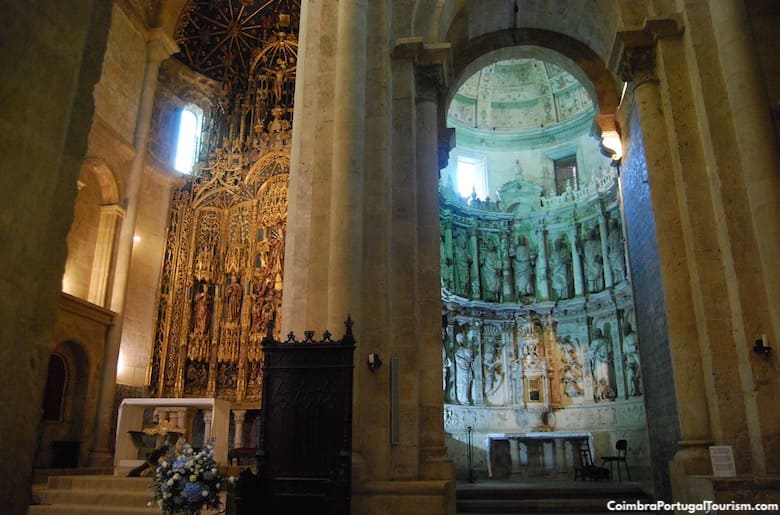
The Sé Velha, or Old Cathedral, dates from 1117 and, unlike most other Romanesque buildings in Portugal and around Europe, it preserves much of the original architecture. The façade and much of the exterior looks like that of a fortress, but its side portal is a fine example of the Renaissance style. Inside, the highlight is an extraordinary Gothic altarpiece in the chancel, created by Flemish sculptors. The cloisters date from 1218, and were the first in the Gothic style in Portugal.
This cathedral is the stage of one of Coimbra’s main cultural events -- the last night of the academic year, in May, when Coimbra University graduates head to the steps by the front partal, to sing and listen to fado as a farewell to student life.
See the Old Cathedral visitors' guide.
Monastery of Santa Clara-a-Velha
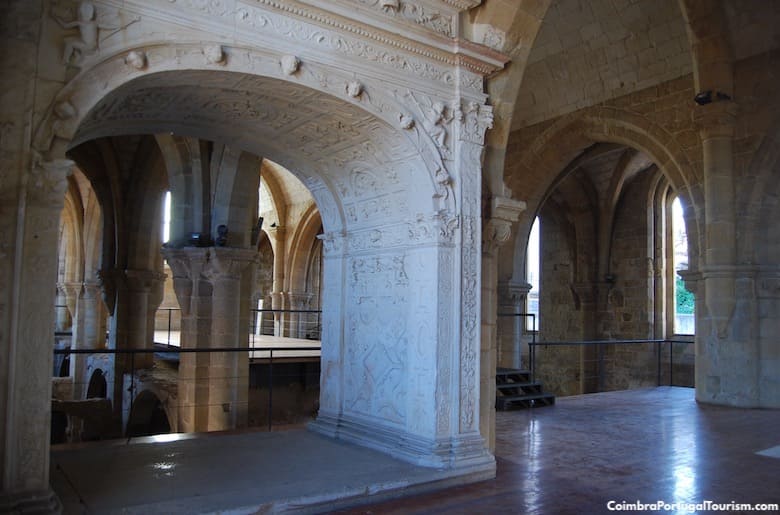
There are two Santa Clara monasteries in Coimbra, and this is the old (“velha”) one. It was founded in 1283, and expanded in 1330 with the construction of a larger church and a new cloister. However, its location by the river meant that floording was frequent, so the nuns moved to a new monastery (see below) up on the hill, in 1677. Abandoned and constantly flooded, the old monastery was a sad ruin for centuries, until 1995, when it was decided that it should be restored. In 2008, the careful restoration was finally completed, and there’s now a museum with archaeological finds and displays explaining the architectural and historical importance of the monument.
See the Santa Clara-a-Velha Monastery visitors' guide.
Monastery of Santa Clara-a-Nova
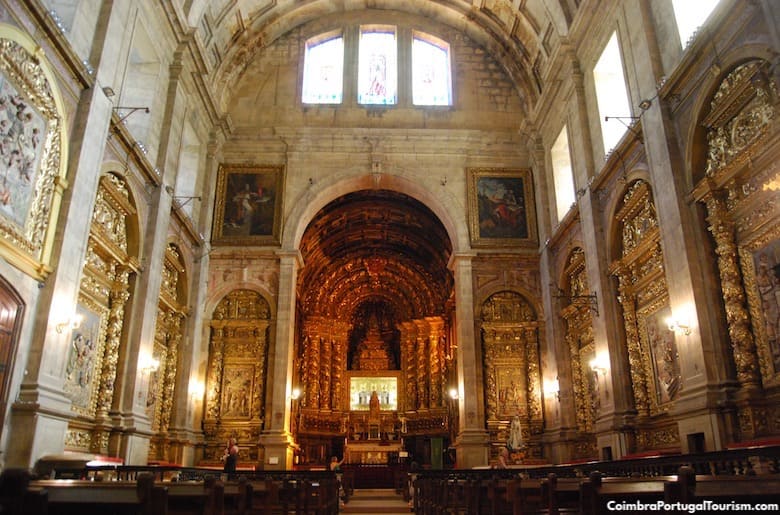
The new (“nova”) monastery of Santa Clara was built in 1677 and finally completed in 1696, to house the nuns who could no longer live in a constantly-flooded home (see above). Its hilltop location meant that flooding was never a problem, and there were inspirational views of the city and river. It’s known as the resting place of beloved Queen Saint Isabel, whose silver and crystal urn was placed in the magnificent baroque altarpiece. Her first tomb, from 1330 and considered a unique example of Gothic art, is in the church’s choir. The entire church is a stunning example of gilded art from the baroque period, while the cloister (added in 1733) is one of the earliest examples of the neoclassical style in Portugal.
See the Santa Clara-a-Nova Monastery visitors' guide.
New Cathedral
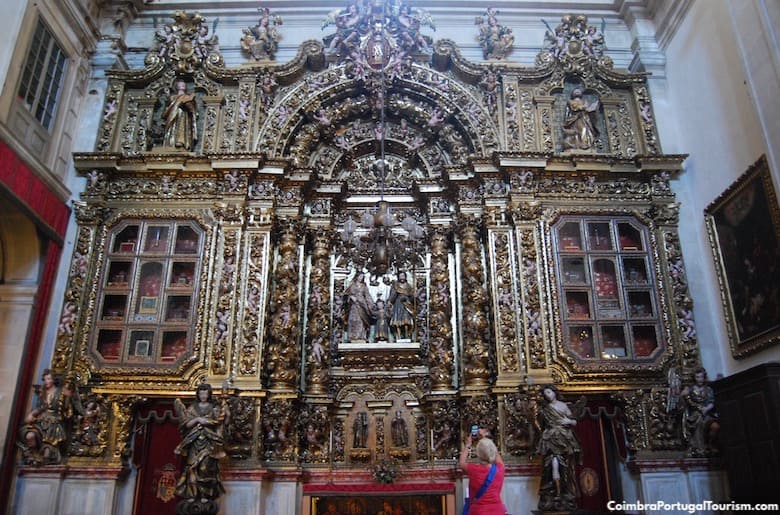
The Sé Nova (“New Cathedral”) is only “new” because it replaced the Old Cathedral (see above) as Coimbra’s main church in 1772. The building, however, dates back to 1598, when it was the church of a Jesuit college. The college prepared missionaries for their missions in the territories colonized by Portugal, such as Brazil and parts of Asia. However, the Jesuits were expelled from the country in 1759, and the college became part of Coimbra University. The former college is now the Museum of Natural History, which is visited as part of a tour of the university, while the church remains the city’s second cathedral. Its façade still has four statues of Jesuit saints (St. Ignatius of Loyola, St. Francis Xavier, St. Francis Borgia, and St. Louis Gonzaga). Inside, it features a Manueline (Portuguese Gothic) font and choir stalls brought from the old cathedral, but its magnificent gold-covered altarpieces date from 18th-century alterations.
See the New Cathedral visitors' guide.
Igreja do Salvador
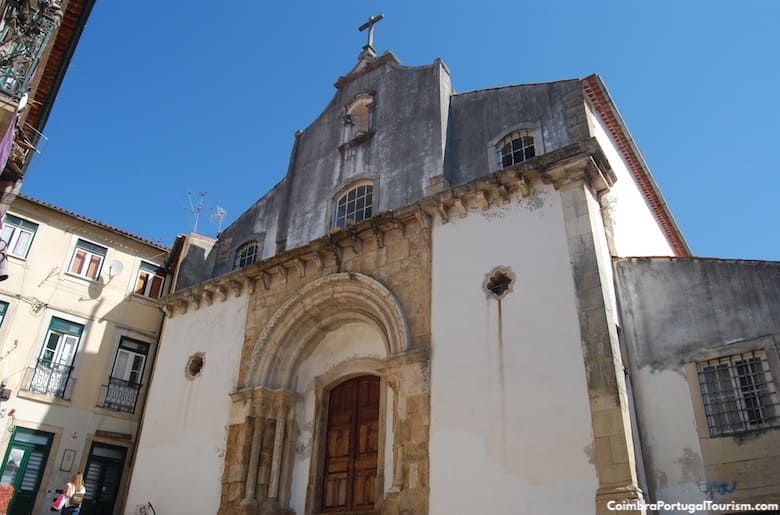
The Church of the Savior faces a tiny square behind the Machado de Castro Museum. It’s one of Coimbra’s oldest monuments, dating back to 1179. Outside, it’s a simple Romanesque building, but inside it was embellished with baroque decoration in the 18th century. The columns and capitals are the oldest parts of the interior, which features beautiful tile panels depicting scenes from the life of Christ and the Virgin. Unfortunately, not too many people get to see them, as the church is almost always closed.
Igreja de Santiago
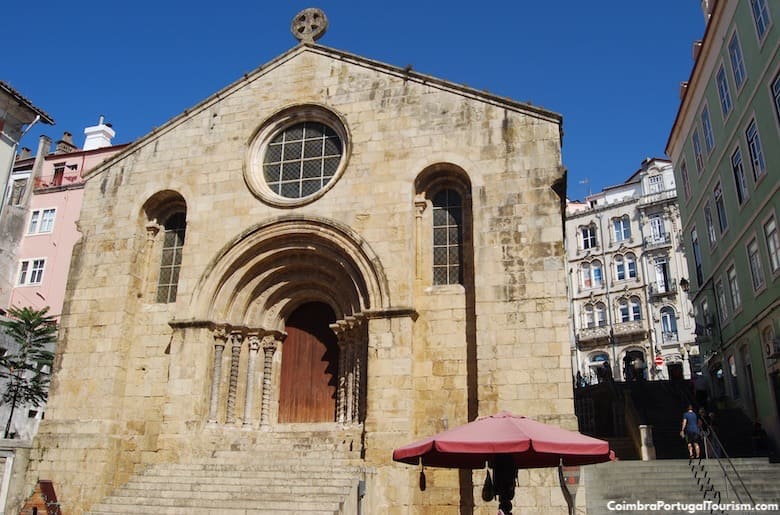
It looks like a plain 12th-century church but it hides an exuberant Rococo altarpiece in gilded wood inside. Everything else is part of the original Romanesque construction, which was restored in the early 20th century. Dedicated to St. James, it stands in a corner of the city’s largest square (Praça do Comércio), but only opens on rare occasions.
Igreja de São Bartolomeu
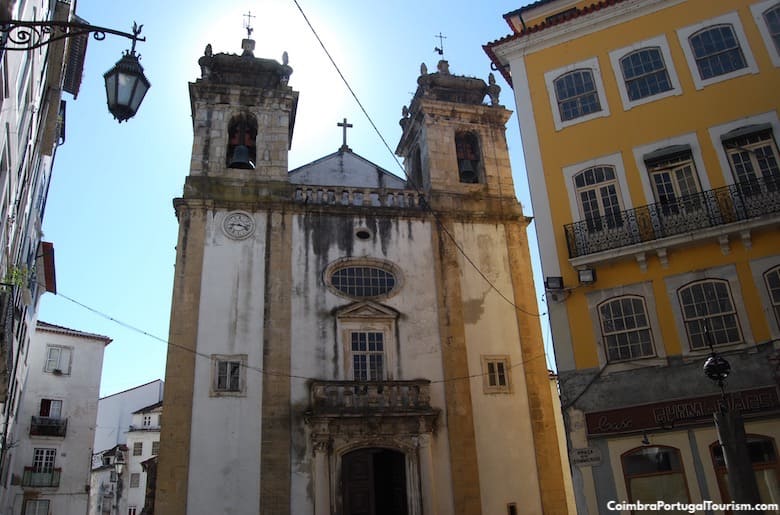
This church was built in the 18th century, on the site of other churches from the 10th and 11th centuries. It faces Praça do Comércio, and has a plain exterior with two bell towers. Inside, it features gilded wood altarpieces, and an 18th-century painting representing the martyrdom of St. Bartholomew, who the church is dedicated to. Other paintings show the death and resurrection of Jesus Christ.
Igreja da Graça
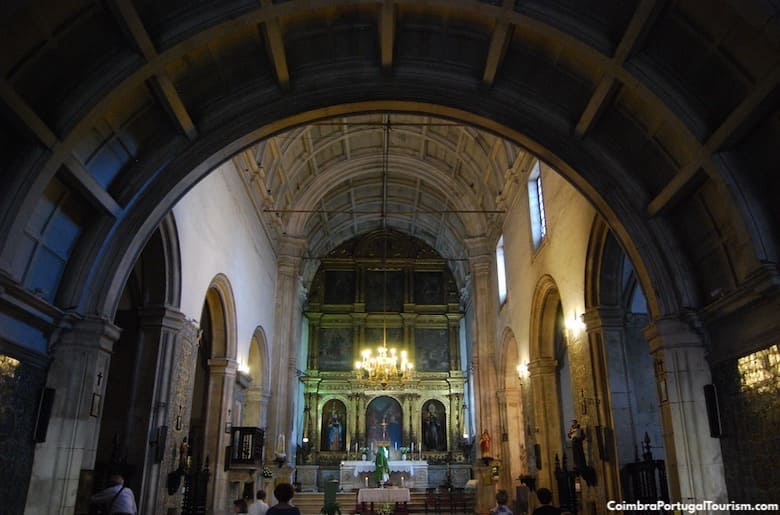
This church was one of the first to be built in the Renaissance style in Portugal. It belonged to a college dedicated to Our Lady of Grace, which was created in 1543 and became part of Coimbra University in 1549. It’s currently occupied by different organizations, but the church is still used for religious services. It’s located in one of Coimbra’s busiest streets (Rua da Sofia), which was home to a number of other churches and colleges, but this is the only one that’s regularly open.